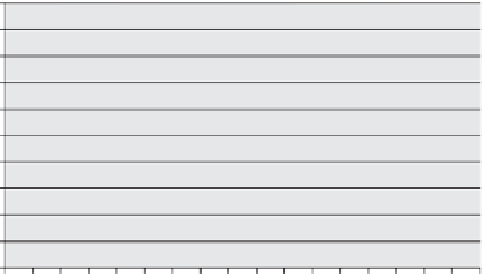Geoscience Reference
In-Depth Information
0.5
0.45
0.4
0.35
0.3
0.25
0.2
0.15
0.1
0.05
0
Market
Disposable Income
FIGURE 6.3. The Evolution of Inequality in Germany.
Source:
Author's calculations on
the basis of LIS surveys (see fn.129 for details).
of wealth, and a second one anchored at a higher average level of inequality
(.45) with much lower and homogeneous wealth. As a result, the average level
of market income inequality across all l ander went up by 3% (the average
Gini increases from about 0.40 to about 0.44).
10
This is hardly surprising. The
incorporation of a large share of dependent population, even if heavily con-
centrated in particular regions is bound to increase levels of pretax, pretransfer
inequality. If anything, the differences should be larger.
11
What is more surprising is how the German economic geography in 1994
changes when one compares the figures for market and disposable income
inequality. The same group of Eastern l ander that, in terms of market income,
concentrated around levels of inequality of 0.44-0.46 anchors around Ginis of
0.22-0.26 when one considers the impact of taxes and transfers. In a nutshell,
what these numbers suggest is that the system of interpersonal redistribution
at work in Germany is generating an enormous transfer of resources from the
relatively well off tax payers, mostly located in the West, to a large contingent
of dependents, heavily concentrated in the East. The effort is of such a scale that
it brings the levels of disposable income inequality among Eastern Lander to
about one-half (!) its market income value. Accordingly, as reflected in
Figure
6.3
, despite the rise in economic disparities associated with Reunification, the
10
These patterns are consistent with other analyses of the distributive implications of Reunification
(Grabka, Schwarze and Wagner
1999
;Schwarze
1996
).
11
That they are not is largely a function of the fact that the calculations in
Figure 6.2
are performed
on the basis of the entire population. This implies that a huge contingent of retirees in both
the East and the West have a level of market income set to zero, thus muting the distributional
gap between the two regions. The advantage of this procedure, though, is that it captures
the full size of the dependent population and not just the share directly related to the labor
market.




